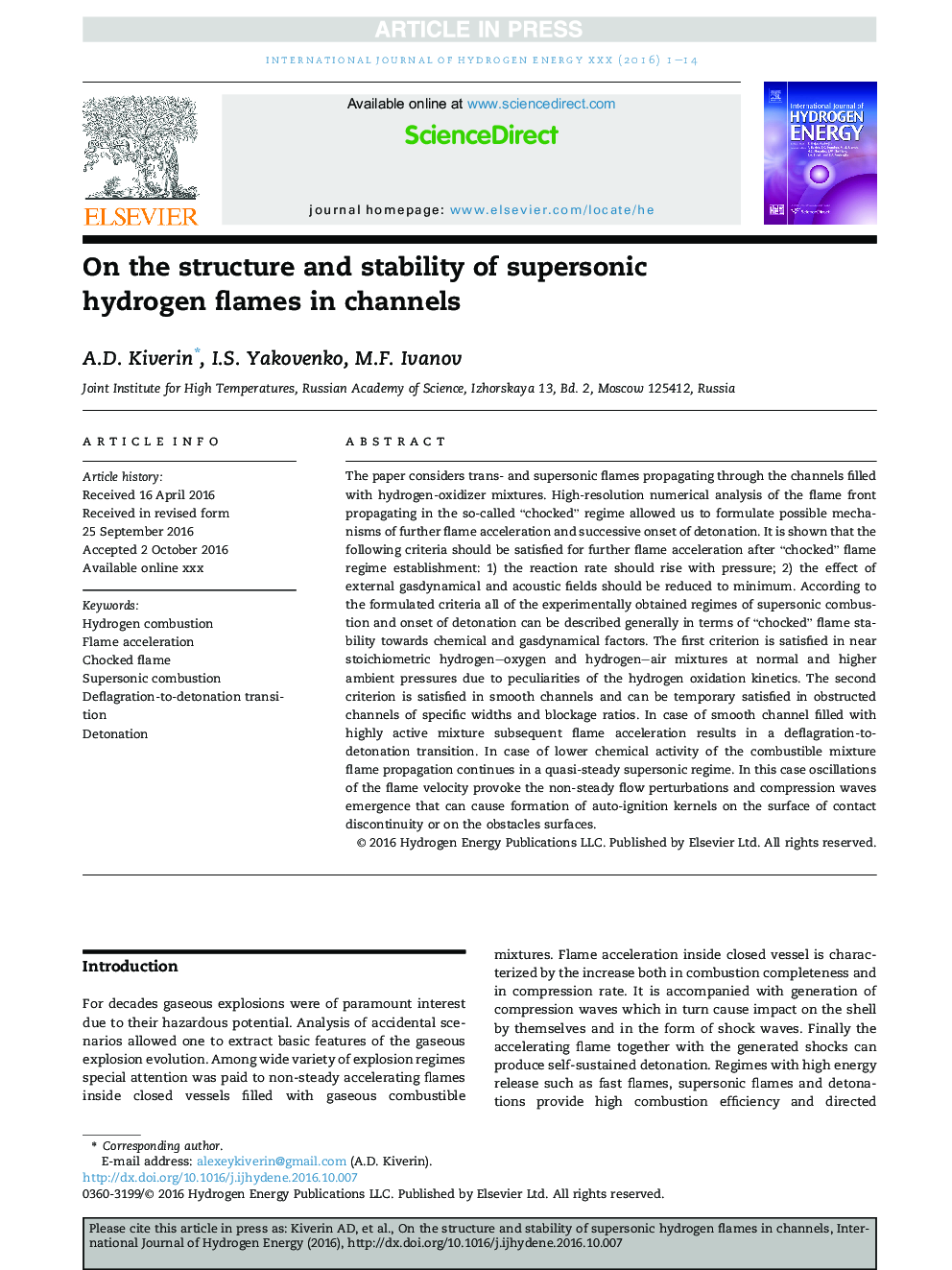| Article ID | Journal | Published Year | Pages | File Type |
|---|---|---|---|---|
| 5147264 | International Journal of Hydrogen Energy | 2016 | 14 Pages |
Abstract
The paper considers trans- and supersonic flames propagating through the channels filled with hydrogen-oxidizer mixtures. High-resolution numerical analysis of the flame front propagating in the so-called “chocked” regime allowed us to formulate possible mechanisms of further flame acceleration and successive onset of detonation. It is shown that the following criteria should be satisfied for further flame acceleration after “chocked” flame regime establishment: 1) the reaction rate should rise with pressure; 2) the effect of external gasdynamical and acoustic fields should be reduced to minimum. According to the formulated criteria all of the experimentally obtained regimes of supersonic combustion and onset of detonation can be described generally in terms of “chocked” flame stability towards chemical and gasdynamical factors. The first criterion is satisfied in near stoichiometric hydrogen-oxygen and hydrogen-air mixtures at normal and higher ambient pressures due to peculiarities of the hydrogen oxidation kinetics. The second criterion is satisfied in smooth channels and can be temporary satisfied in obstructed channels of specific widths and blockage ratios. In case of smooth channel filled with highly active mixture subsequent flame acceleration results in a deflagration-to-detonation transition. In case of lower chemical activity of the combustible mixture flame propagation continues in a quasi-steady supersonic regime. In this case oscillations of the flame velocity provoke the non-steady flow perturbations and compression waves emergence that can cause formation of auto-ignition kernels on the surface of contact discontinuity or on the obstacles surfaces.
Keywords
Related Topics
Physical Sciences and Engineering
Chemistry
Electrochemistry
Authors
A.D. Kiverin, I.S. Yakovenko, M.F. Ivanov,
